The US dollar was soft last night as EUR rallied:
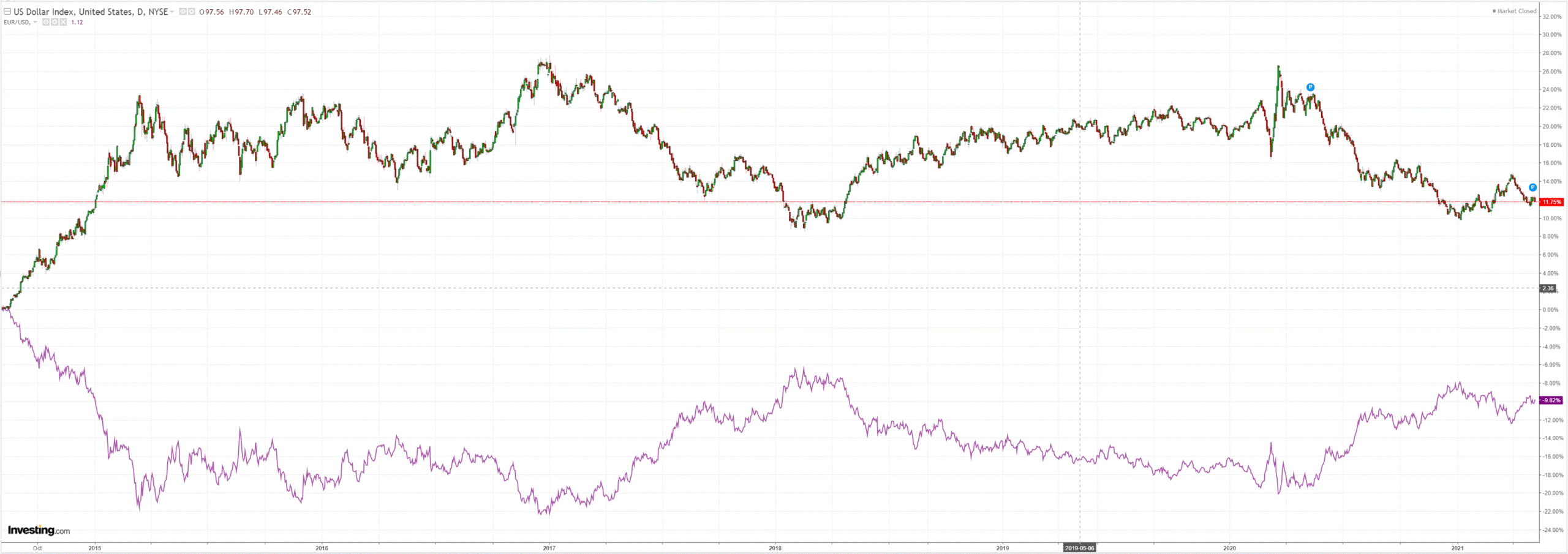
The Australian dollar moved higher but is still caught in a large head and shoulders topping pattern, a downtrend versus EUR as JPY is breaking out:
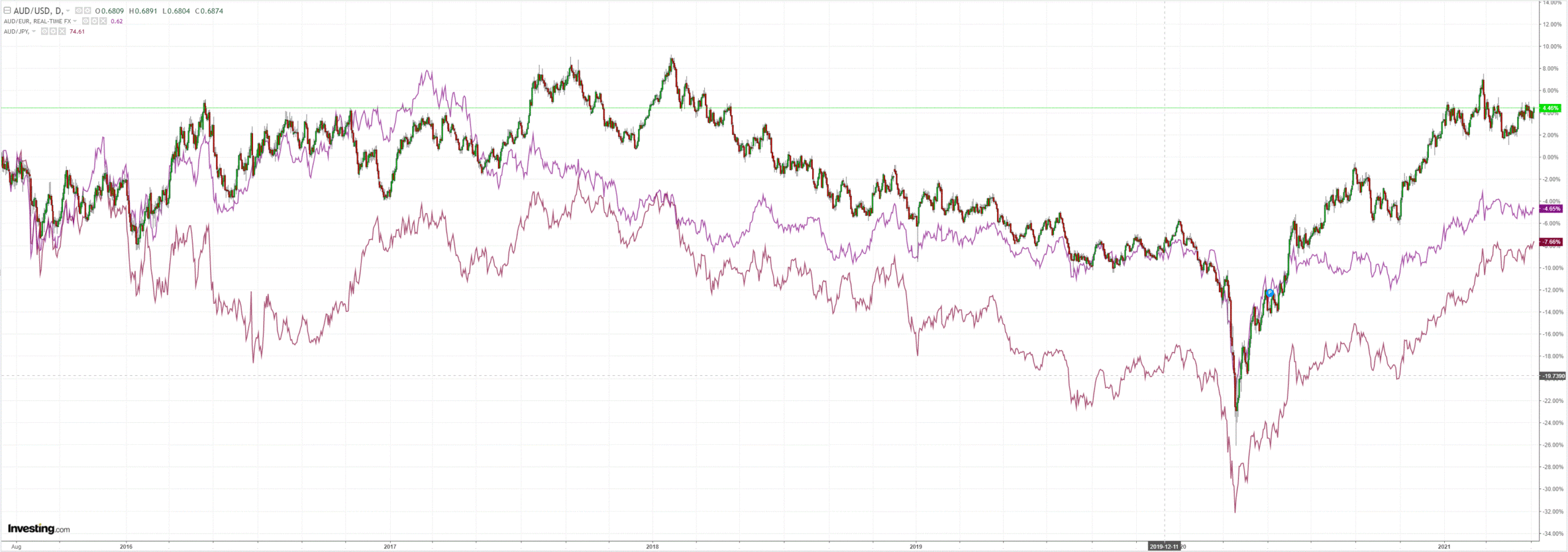
AUD is now clearly underperforming EMs:
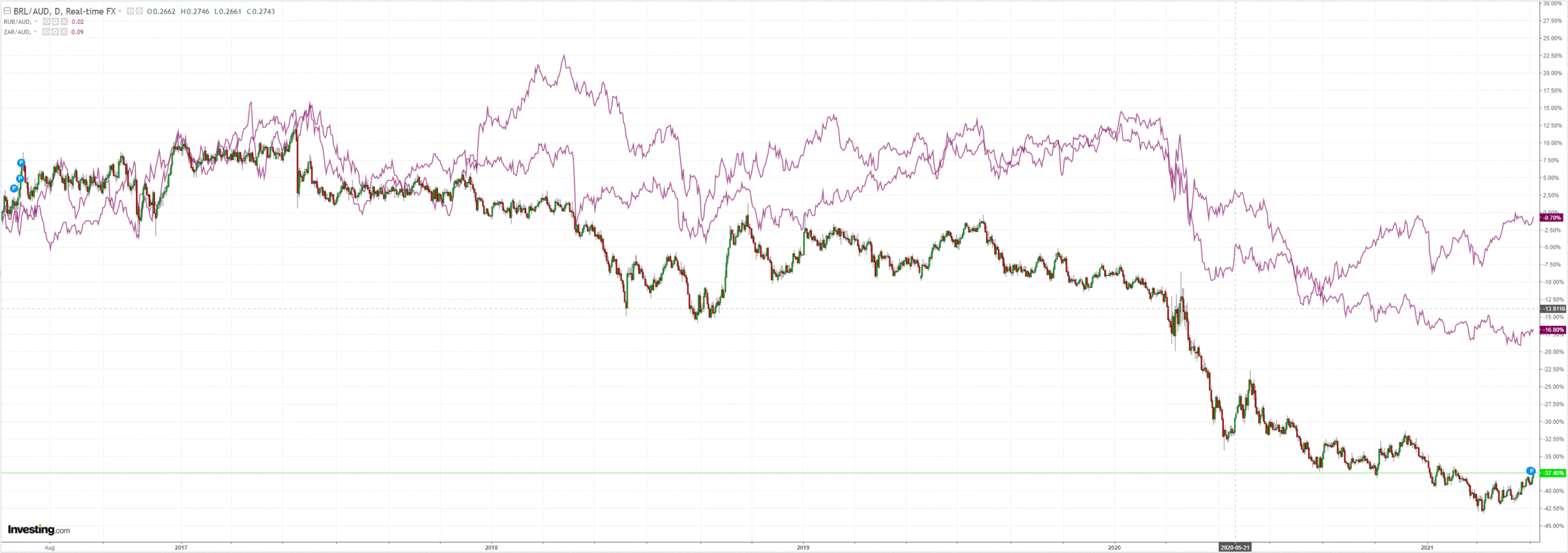
Gold flew as US real rates plunge negative, oil is stuck again:
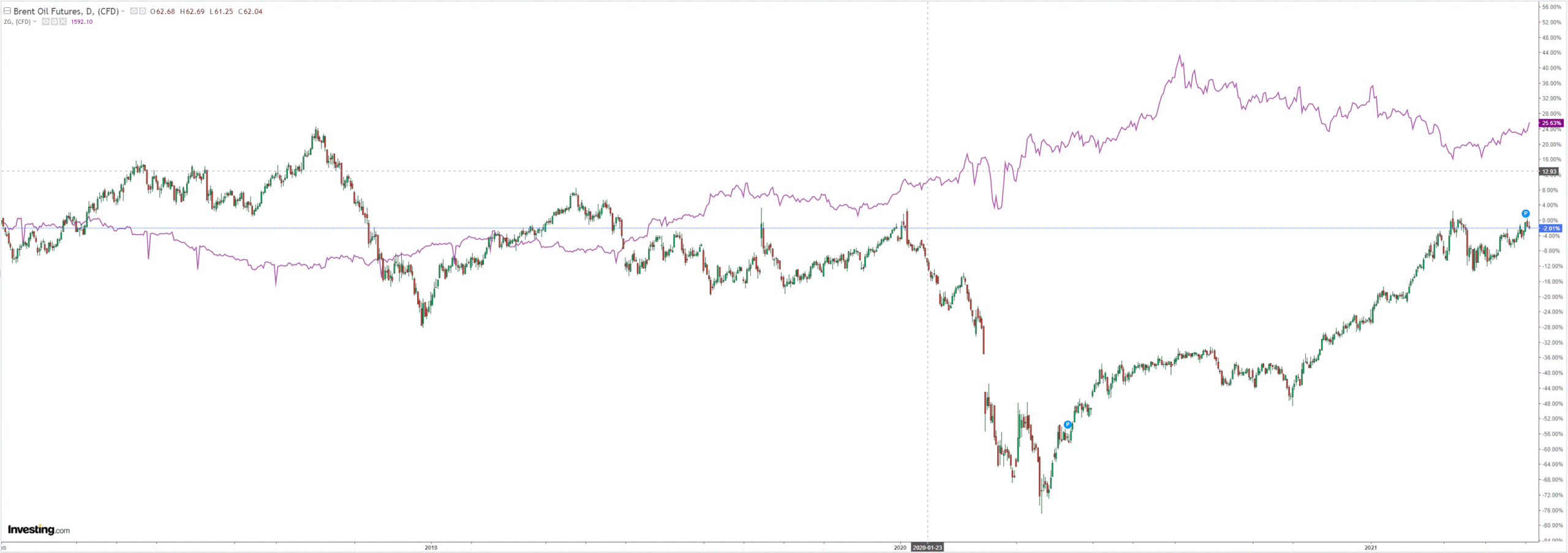
Copper is now a fully-fledged bubble:
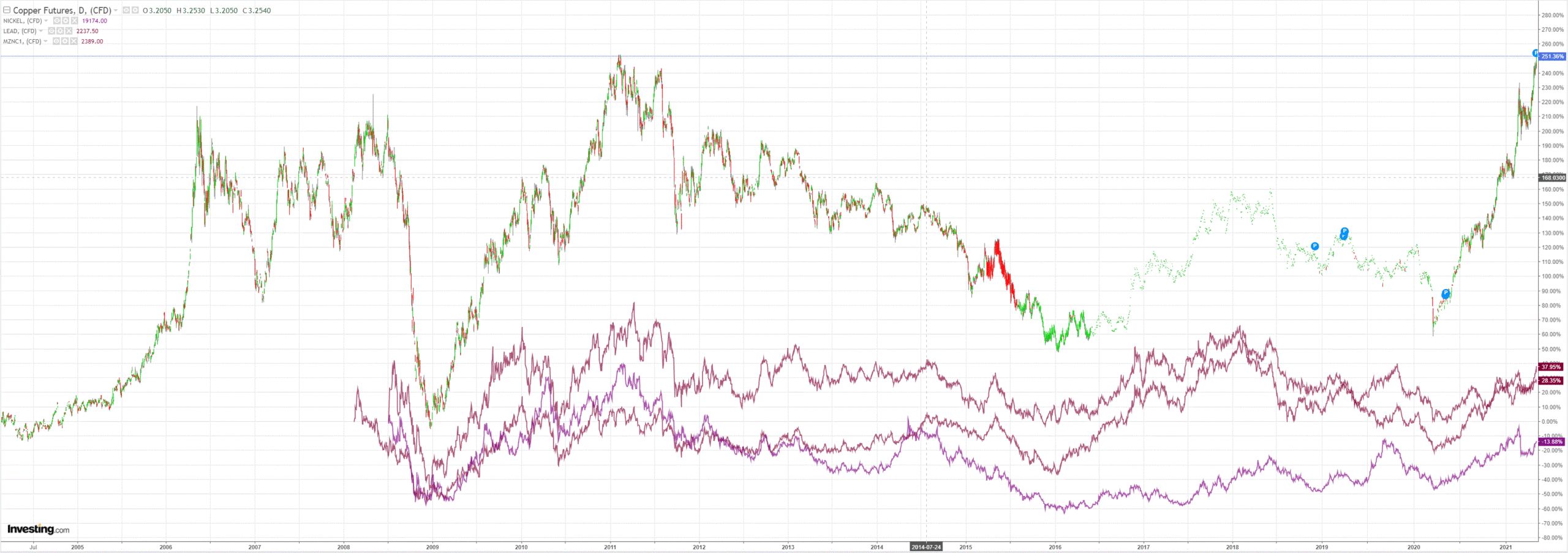
Big miners firmed:
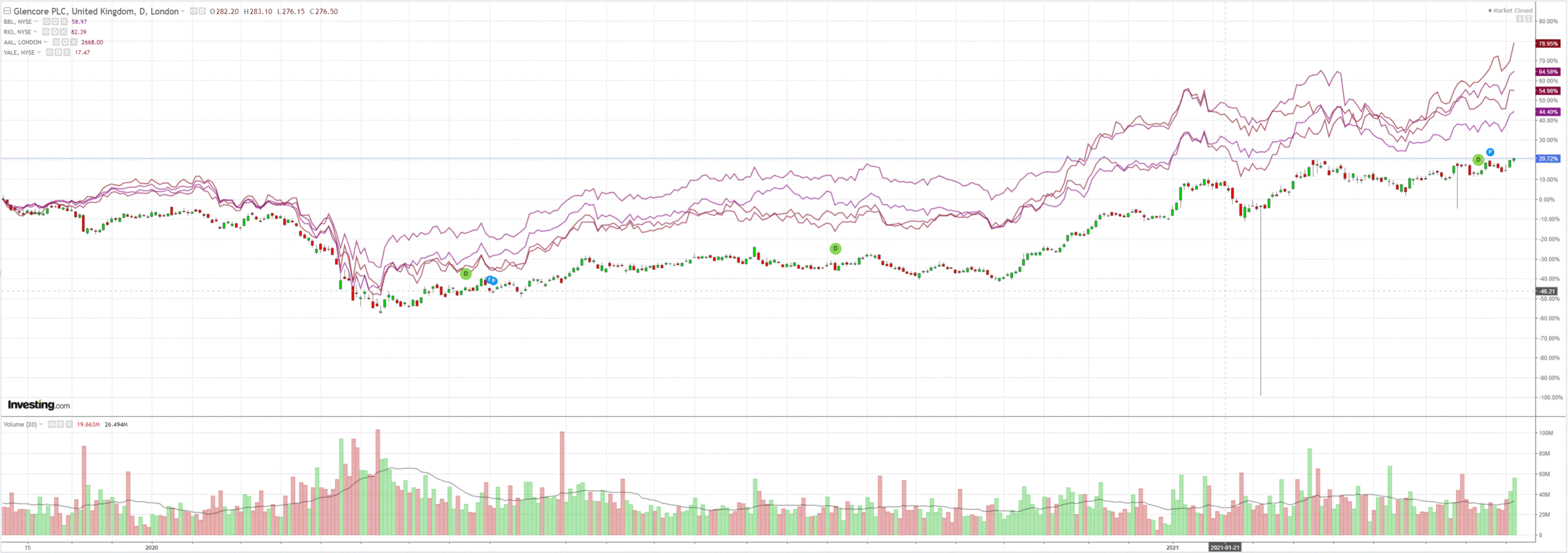
EM stocks are stuck:
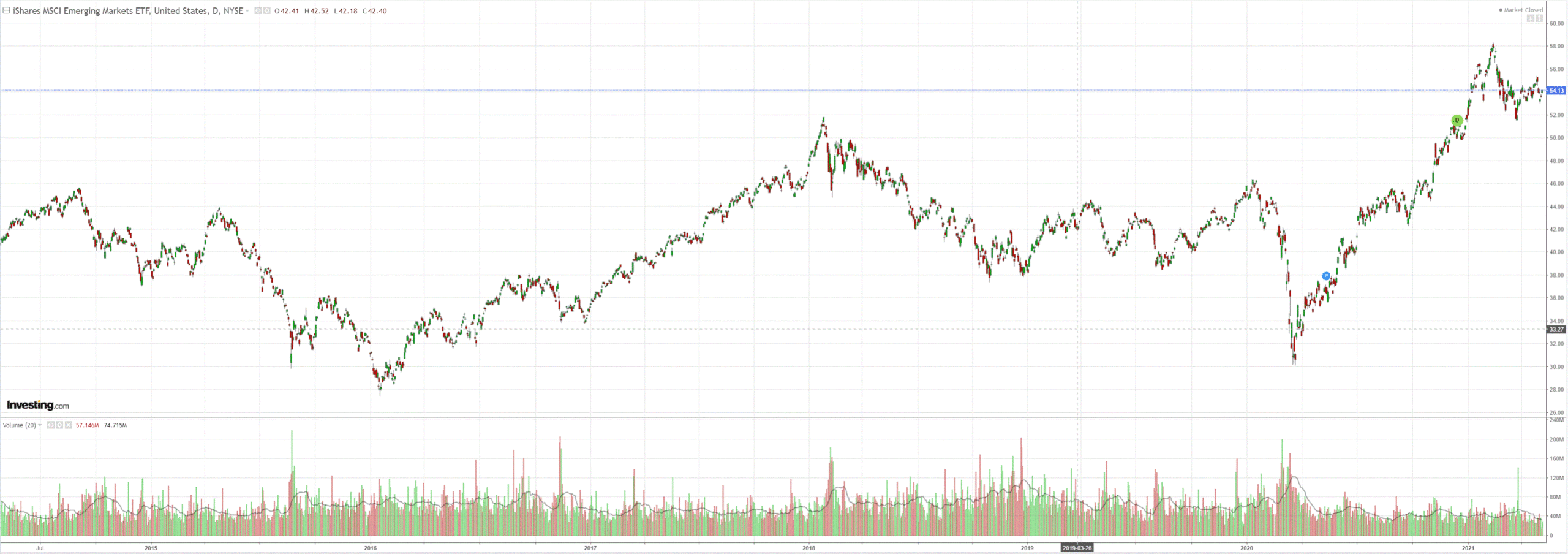
Junk is fine:
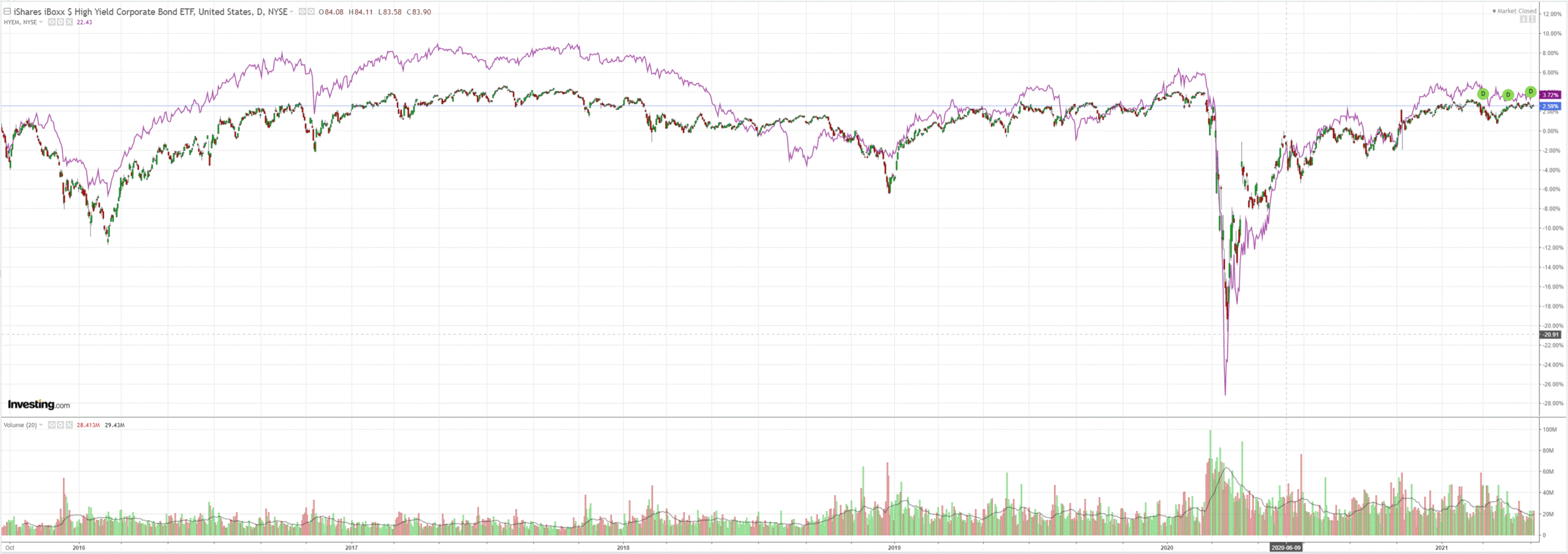
Remarkably, as US inflation fears roar, yields keep falling:
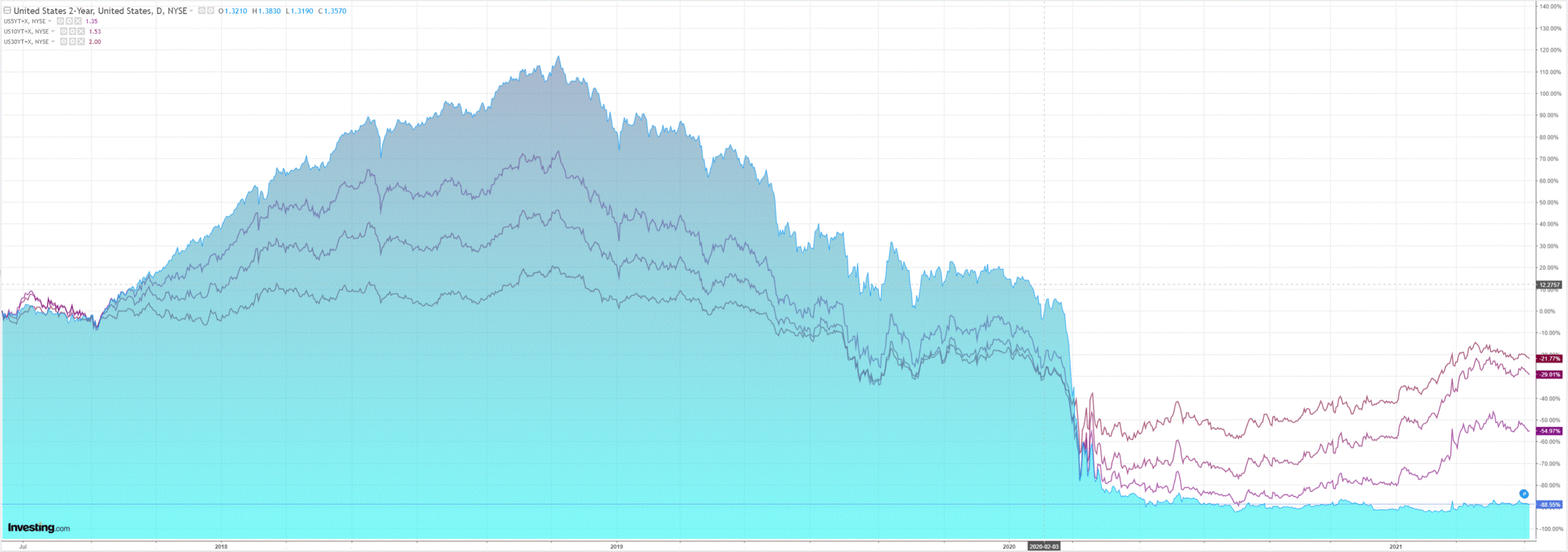
Stocks loved that, though Nasdaq is sending a very clear warning that inflation is not growth stock’s friend:
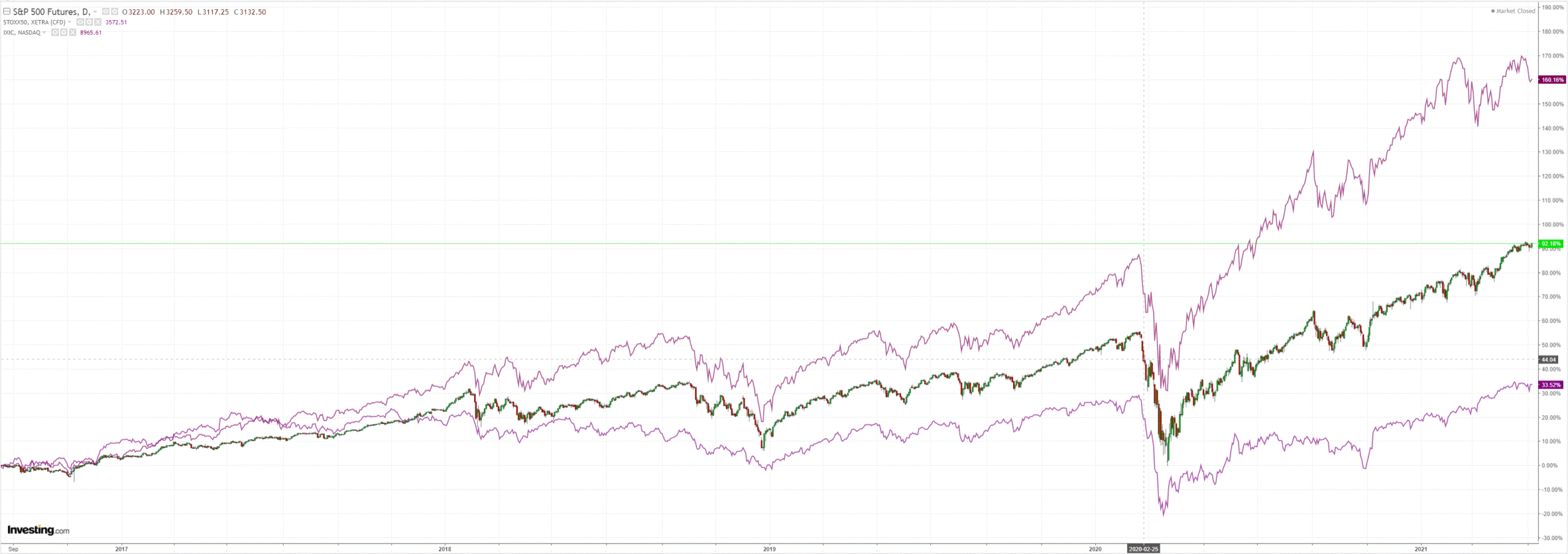
Westpac has the wrap:
Event Wrap
US weekly initial jobless claims fell to 498k (est. 538k), but the prior release was revised higher to 590k from 553k, and continuing claims rose to 3.69m (est. 3.63m).
Eurozone retail sales in March rose 2.7%m/m (est. +1.6%m/m), with upwards revisions to prior releases taking the annual rate to +12.0%y/y (est. +9.4%y/y). German factory orders also beat estimates, with a rise of 3.0%m/m (est. +1.5%m/m).
Norges Bank left its key policy rates unchanged but again indicated that a rise in rates was likely in H2 2021, given vaccination progress and reduced economic uncertainty.
Bank of England left its policy rates and QE unchanged, although the recent hawkish stance of Chief Economist Haldane was reflected in his dissent on QE: he voted to reduce the target for bond purchases. The BoE did affirm that the pace of bond purchases would slow, as was previously signalled, which the Bank stressed was purely an operational decision that “should not be interpreted as a change in the stance of monetary policy.”The Monetary Policy Report raised near term growth and inflation forecasts and lowered unemployment. Although CPI inflation is seen as rising above 2% in the coming year, it is projected to fall back below 2% into the end of the forecast period. The BoE had a more balanced assessment of risks around their projections, and dropped discussion of NIRP.
RBA Dep. Gov. Debelle gave a speech on “Monetary Policy During Covid” which outlined the resilience of the Australian economy, and the effectiveness of RBA policy and fiscal policy. Although he largely stuck to the material in the latest RBA Statement, he did state that the RBA would consider the actions of other central banks when reviewing their QE and YCC programmes in July. He repeated that there would be no change in their key rate until at least 2024. Monetary policy actions were thought to have pushed longer maturity bond yields around 30bps lower than otherwise. When questioned on unemployment he said that there was still some way to go in reducing unemployment and that there was only a low possibility of inducing any notable rise in wage inflation.
Event Outlook
Australia: The RBA will release the May Statement on Monetary Policy. The updated forecasts will be closely scrutinised by markets. The April AiG PSI will be published; conditions in the services sector rose 2.9pts in March, to the highest level since June 2018.
China: The April trade balance should pick up after a seasonal dip during Lunar New Year. Meanwhile, foreign reserves should rise in April on a weakening USD. The Q1 current account balance is approaching pre-GFC levels, the series high. At some point on or after 8 May, we are expecting direct foreign investment figures for April.
US: With the vaccine drive in full swing and the economy showing strong momentum, the coming three months are likely to see strong results for nonfarm payrolls. In April we look for 1.1mn new jobs and believe further upward revisions to prior months could also be seen. This should see the unemployment rate fall to 5.8%. Meanwhile, average hourly earnings should edge up a more muted 0.1%, given the remaining slack in the labour market. March consumer credit is expected to rise $20.000bn, following a strong February print (the largest monthly increase in 3 years).
Obviously, the story of the day for AUD is iron ore at $202.65 with futures still screaming higher. Yet the story for the AUD is not that it is rising but that it is not.
The last time that the Aussie terms of trade were this high, the AUD was at $1.10.
I have described why this is the case many times:
- US growth, inflation and yield leadership.
- Temporary supply shortages.
- A bogus commodities super cycle.
- Failed vaccine rollout.
Today we can add one more. With iron ore blasting higher as the Morrison Government declares war on China, injecting a geopolitical risk premium into the price, it’s pretty obvious that that same driver also weighs heavily on the AUD. As we saw yesterday when China suspended a meaningless economic dialogue and the battler plunged nearly 1% before rebounding.
In some ways this is disappointing. Given our contention that this is all very temporary, it would be nice to see the AUD fly wild and free for a while to offer a better price to rotate offshore.
Still, we’ll take what the market offers and do so anyway in preparation for the coming commodities and AUD bust.

